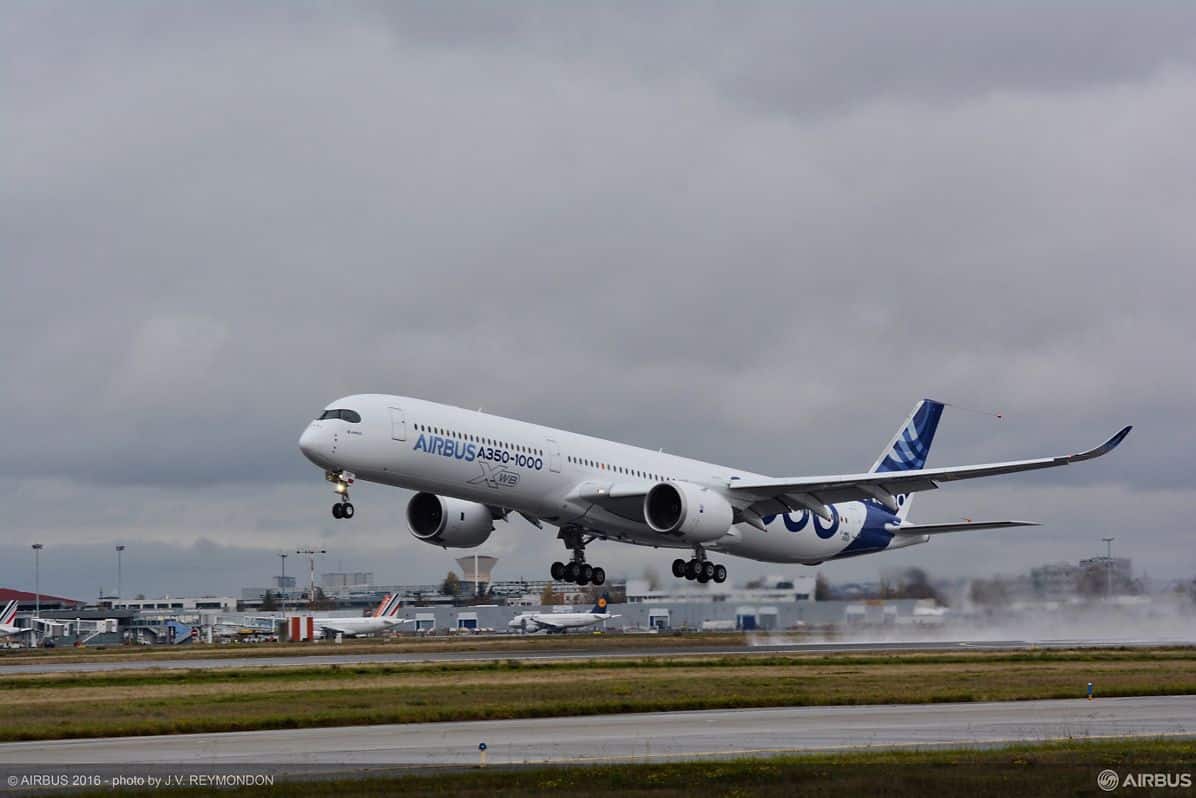Aerospace
Air India will buy Airbus A350 aircraft for international operations, with the plane arriving in March 2023-24.

According to sources Zee News , Tata Group-owned Air India has decided to purchase its first batch of Airbus wide-body A350 aircraft, with the first plane arriving in March 2023. However, it was unclear how many A350 jets Air India would purchase. Air India has not purchased a single aircraft since 2006, when it placed orders for 111 aircraft, 68 from Boeing in the United States and 43 from Airbus in Europe.
A wide-body airliner, such as the Airbus A350, has a larger fuel tank, allowing it to fly longer distances, such as from India to the United States. The Tata Group acquired Air India on January 27 after successfully bidding for the airline on October 8, last year.
According to sources, Air India has begun asking its senior pilots if they want to receive “conversion training” to fly A350 aircraft. Pilots from Air India are trained to fly Boeing wide-body aircraft. As a result, they must undergo “conversion training” in order to operate an Airbus A350.
Air India has 49 wide-body aircraft in its fleet, according to the airline’s website: 18 Boeing B777, 4 Boeing B747, and 27 Boeing B787.
How has Boeing’s B787 dreamliner turned into a nightmare?
According to sources, Air India is buying A350 planes and would get its first one in March 2023. N Chandrasekaran, the airline’s chairman and the chairman of the Tata Group, has overhauled the airline’s top management since April, bringing in senior and middle-level executives from other Tata Group firms such as Tata Steel and Vistara.
Air India and Airbus did not react to PTI’s enquiries about aircraft purchase.
Airbus A321 Neo is attracting more interest than the Boeing 737-10 Max.

Aerospace
Boeing Transfers Rocket Stage to NASA, Paving Way for Human Moon Mission

Boeing has achieved a significant milestone by providing NASA with the second core stage of the Space Launch System (SLS) rocket.
This crucial component, crafted at NASA’s Michoud Assembly Facility (MAF), is set to propel the Artemis II crew into lunar orbit, marking humanity’s return to deep space after a 50-year hiatus.
The monumental Boeing-built rocket stage, the largest element of the Artemis II mission, will embark on a journey aboard the Pegasus barge, traveling 900 miles to NASA’s Kennedy Space Center.
Comparison of two legendary aircraft B777x vs B747 aircraft:Click here
Upon arrival, it will be meticulously integrated with other essential Artemis II components, including the upper stage, solid rocket boosters, and NASA’s Orion spacecraft within the iconic Vehicle Assembly Building. This intricate integration process is a vital step toward the eagerly anticipated Artemis II launch, slated for 2025.
“Boeing-built products helped land humankind on the moon in 1969, and we’re proud to continue that legacy through the Artemis generation,” remarked Dave Dutcher, vice president and program manager for Boeing’s SLS program. “Together, with NASA and our industry partners and suppliers, we are building the world’s most capable rocket and paving the way to deep space through America’s rocket factory in New Orleans.”
NASA, Lockheed Martin Reveal X-59 Quiet Supersonic Aircraft:Click here
The delivery of Core Stage 2 marks a significant achievement in the evolution of the SLS rocket. Towering over 200 feet and powered by four RS-25 engines, this core stage, coupled with two solid-fueled booster rockets, will generate a staggering 8.8 million pounds of thrust. This immense power is crucial to launching Artemis II and future missions into the vast expanse of space.
The SLS rocket stands unparalleled in its capability to transport both crew and substantial cargo to the moon and beyond in a single launch. Its extraordinary capacity will facilitate the delivery of human-rated spacecraft, habitats, and scientific missions to destinations including the moon and Mars, ushering in a new era of space exploration.
-

 Travel1 week ago
Travel1 week agoAir India to Expand US Operations with Three New Routes After a Decade
-

 Travel2 weeks ago
Travel2 weeks agoWhy We Should Avoid These Stamps in a Passport
-

 Airlines1 month ago
Airlines1 month agoInvestigations Reveal Fake Chinese Titanium in Boeing and Airbus Jets
-

 Tech4 weeks ago
Tech4 weeks agoChina’s CATL Plans 1,800-Mile Electric Plane Launch by 2027
-

 Airport3 days ago
Airport3 days agoTop 10 Largest Airports in the World by Size
-

 Aerospace4 weeks ago
Aerospace4 weeks agoChina’s Fighter Jets Turn Wings into Autonomous Drones
-

 Airlines4 days ago
Airlines4 days agoAir India Rolls Out A350s for Delhi-New York JFK and Newark Routes
-

 Defence3 weeks ago
Defence3 weeks agoBoeing Enhances Chinook with New Engines and Block II Upgrades at $96 Million







